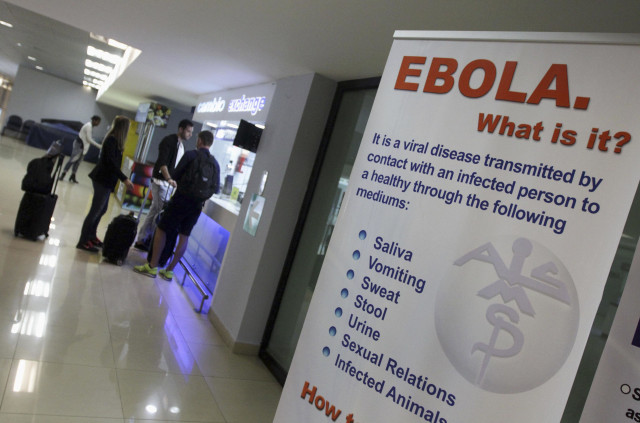First suspected Ebola case emerges in Faisalabad
A senior official at the NIH says that it is too early to say that it is an Ebola virus case

Zulfiqar Ahmad, 40, a resident of Chiniot district, returned to Pakistan from the sub-Saharan nation of Togo on November 16. Initially, he was hospitalised at the District Headquarters Hospital, Chiniot, for treatment of multiple health conditions. His condition, however, didn’t improve and subsequently his family admitted him to Faisalabad’s Allied Hospital where medics, after initial diagnostic tests, said it might be a case of Ebola virus.

“Zulfiqar is a chronic patient of various diseases and remained hospitalised for more than 20 days in Togo before returning to Pakistan,” Medical Superintendent Dr Rashid Maqbool told The Express Tribune.
“The patient has serious liver issues. Blood is coming from his mouth, urine and bowl,” Dr Maqbool said. “He is in a critical condition. We have sent his blood and urine samples to the National Institute of Health (NIH) in Islamabad,” he added. “The test reports will establish whether or not it’s Ebola virus.”
Dr Maqbool said they have constituted a special team to treat the patient who has been kept in isolation as the medical and paramedical staffs were taking all precautionary measures.
In Islamabad, a senior official at the NIH said that it was too early to say that it was an Ebola virus case. “The patient, Zulfiqar, came from Togo where no EVD case has been reported so far,” the official told The Express Tribune on condition of anonymity.
He said the patient’s blood and urine samples would be sent to the WHO collaborating centres for viral hemorrhagic fevers. A senior official of the World Health Organisation (WHO), meanwhile, told The Express Tribune that the patient could be suffering from hemorrhagic fever. “The situation would become clear after the laboratory tests,” he added.
Ebola virus has infected over 15,000 people in West Africa since it was first reported in Guinea in March, according to the WHO. Although the number of cases in Liberia appears to be falling, Sierra Leone and Guinea are witnessing a steep rise in the number people who are newly infected. Mali is currently fighting its second outbreak.
Ebola virus disease, formerly known as Ebola haemorrhagic fever, is a severe, often fatal illness in humans. It is transmitted to people from wild animals and spreads in the human population through direct contact with bodily fluids of an infected parent.
The average EVD case fatality rate is around 50%. Case fatality rates have varied from 25% to 90% in past outbreaks. The WHO, however, has reported a fatality rate of 70% in the current outbreak.
Published in The Express Tribune, November 25th, 2014.



















COMMENTS
Comments are moderated and generally will be posted if they are on-topic and not abusive.
For more information, please see our Comments FAQ